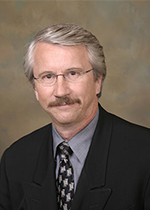 As we continue to engage partner sites throughout the COMPPARE network, we are pleased to launch our COMPPARE Consortium Spotlight, which will provide insight into the successes of our partner proton and photon centers across the U.S.
As we continue to engage partner sites throughout the COMPPARE network, we are pleased to launch our COMPPARE Consortium Spotlight, which will provide insight into the successes of our partner proton and photon centers across the U.S.
Participation and retention in any study can be influenced by protocol complexities, lack of patient awareness, and sociocultural barriers.[i] Here, Jerry D. Slater, MD, Medical Director of the James M. Slater, MD Proton Treatment & Research Center, Loma Linda, CA, discusses how the center overcame similar challenges to increase patient enrollment, retention, and team engagement.
Dr. Slater relates that a key component of their success was an in-person site visit with Dr. Nancy Mendenhall, COMPPARE Principal Investigator, and Charles Griggs, COMPPARE Engagement Coordinator. Conducted in February, prior to the arrival of COVID-19, the visit provided an opportunity to review the site’s specific challenges and work through them together.
“All sites have their own workflows, and initially, at start up, there are a lot of processes that may need to be modified, plans that need to be reviewed and approved, and patient forms and surveys to manage,” he recalled. “As we worked to finalize our approach to COMPPARE, our meeting with Dr. Mendenhall really got people feeling that they were all part of a team.”
Dr. Slater noted the importance of easing patients through the responsibility of form completion. To accomplish this, the center modified its team, allowing them to increase the assistance offered to participants.
“We want to be sure to make patient participation as seamless as possible, rather than creating more work for them,” he said.
The center also changed its approach to onboarding patients in the wake of COVID-19. “Before the pandemic, we conducted weekly in-person meetings with patients who hadn’t been seen yet, and online engagement may not have the same impact,” Dr. Slater explained. “So, while it has been difficult to engage them before they arrive, when they do, we have found that the COMPPARE video is very helpful.”
Efforts at the center to increase minority participation and overcome issues involving insurance, treatment distances, and convenience are bolstered by dedicated and specialized staff members. The team also concentrates on one study at a time, ensuring that the goals of COMPPARE – to determine the differences in quality of life, side effects, and cure rates in prostate cancer patients treated with proton versus photon therapy – are clearly understood and embraced by participants.
“COMPPARE will hopefully give the answers that all of us would like to see,” said Dr. Slater. “We want to make sure we present it as a normal option for our patients.”
Our next Consortium Spotlight will feature a COMPPARE photon partner. We are grateful to Dr. Slater and his team for their input and dedicated participation in COMPPARE, and we appreciate all partner sites working so diligently to improve prostate cancer outcomes for men.
[i] Kadam RA, Borde SU, Madas SA, Salvi SS, Limaye SS. Challenges in recruitment and retention of clinical trial subjects. Perspect Clin Res. 2016;7(3):137-143. doi:10.4103/2229-3485.184820